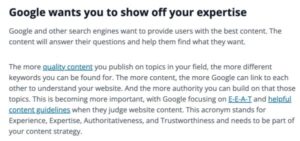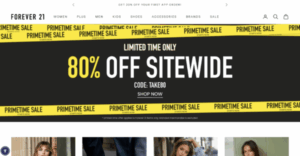
YouTube data scraping is a technique that involves programmatically collecting data from YouTube’s web pages. This can include facts like video titles, descriptions, view counts, likes, feedback, and much more. The data may be scraped using numerous methods, along with web scraping tools and APIs, after which it is used for numerous analytical purposes. For example, marketers might scrape YouTube data to analyze trends in content engagement, while researchers may use it to examine social behaviour and interactions on the platform. Businesses and researchers can discover insights that power strategic decisions by understanding how YouTube data is established and how it can be accessed.
Importance of YouTube Data Scraping

The importance of YouTube data scraping can’t be overstated. YouTube is certainly one of the most important video-sharing platforms globally, with millions of videos being uploaded every day. This big quantity of content material generates a treasure trove of data that can be incredibly valuable for businesses and researchers. For businesses, understanding how audiences engage with content can offer insights into customer preferences and behaviours, which could inform marketing strategies and product development. For researchers, YouTube data can provide insights into social trends, communication patterns, and much more.
YouTube Data Scraping Methods and Tools
There are several methods and tools available for scraping data from YouTube. Some of the most popular methods include:
Web Scraping with Python
Python’s simplicity and powerful libraries make it a popular choice for web scraping among programmers. Libraries like BeautifulSoup and Scrapy can be used to parse HTML and extract data. BeautifulSoup is particularly useful for simple scraping tasks, while Scrapy is more powerful and suitable for complex scraping projects. Here is a brief overview of how to use these tools for YouTube data scraping:
- BeautifulSoup: This library is utilized for parsing HTML and XML documents, generating a parse tree for analyzed pages that can be leveraged to retrieve information from HTML, particularly beneficial for scraping YouTube video metadata.
- Scrapy: This is an open-source and collaborative web crawling framework for Python. Scrapy is utilized for the extraction of data from websites and subsequent processing following specific needs. It’s a powerful tool for web scraping and can handle complex scraping tasks efficiently.
YouTube Data API
The official YouTube Data API provides access to various YouTube resources like videos, playlists, and channels, allowing for more structured and reliable data extraction. The API provides endpoints to retrieve information about YouTube videos, channels, playlists, and more. Here is how you can use the YouTube Data Scraping API:
- Set Up API Access: First, you need to create a project on the Google Developers Console and enable the YouTube Data API.
- Get API Credentials: Obtain your API key to authenticate your requests.
- Make API Requests: Utilize the API to obtain information regarding videos, channels, playlists, and additional content.
Third-Party Tools
There are several third-party tools available that offer user-friendly interfaces for scraping data without needing to write code. Some of the popular ones include:
- Octoparse: This robust web scraping tool is capable of extracting data from any website effortlessly, with no coding required.
- ParseHub: Another great tool for scraping that supports JavaScript and AJAX-heavy sites.
- WebHarvy: A point-and-click scraping software that can extract data from web pages with ease.
Each method has its advantages and limitations, and the choice of method depends on factors such as the volume of data needed, the level of detail required, and technical expertise.
Best Practices for YouTube Scraping
When scraping data from YouTube, it’s important to follow best practices to ensure efficient and ethical data collection:
Respect YouTube’s Terms of Service
YouTube has specific terms of service that dictate how their data can be access and used. Violating these terms can result in legal consequences and account bans. It is crucial to review and adhere to YouTube’s terms of service to avoid any issues.
Use Proxies and Rotate IPs
YouTube may block IP addresses that make too many requests in a short period. To avoid this, use proxies and rotate IP addresses. This helps to distribute the load and avoid triggering YouTube’s security mechanisms.
Data Validation and Cleaning
Scraped data often contains inconsistencies and errors. It is important to validate and clean the data before using it for analysis. This might involve removing duplicates, correcting errors, and standardizing data formats.
How to Scrape YouTube Videos and Channels
Scraping YouTube videos and channels can be done using both API-based and web scraping methods. Here’s a step-by-step guide using Python and the YouTube Data Scraping API:
Step-by-Step Guide Using YouTube Data API
1. Set Up API Access: Obtain API credentials by creating a project on the Google Developers Console and enabling the YouTube Data API.
2. Install Required Libraries: Use pip to install libraries like google-api-python-client and pandas.
3. Write the Script:
from googleapiclient.discovery import build
# Replace with your actual API key
api_key = 'YOUR_API_KEY'
youtube = build('youtube', 'v3', developerKey=api_key)
def get_video_details(video_id):
try:
request = youtube.videos().list(part='snippet,statistics', id=video_id)
response = request.execute()
return response
except Exception as e:
print(f"An error occurred: {e}")
return None
# Replace with the actual video ID
video_id = 'VIDEO_ID'
video_details = get_video_details(video_id)
if video_details:
print(video_details)
else:
print("Failed to retrieve video details.")
4. Extract Data: Parse the API response to extract relevant data such as title, description, view count, and likes.
Step-by-Step Guide Using Web Scraping
For web scraping, use libraries like BeautifulSoup to parse HTML content from video pages and extract similar data fields. Here’s a brief guide:
1. Install Required Libraries: Use pip to install libraries like requests and BeautifulSoup4.
2. Write the Script:
import requests
from bs4 import BeautifulSoup
# Define the URL with the video ID
video_id = 'VIDEO_ID'
url = f'https://www.youtube.com/watch?v={video_id}'
# Send the GET request and handle potential errors
try:
response = requests.get(url)
response.raise_for_status() # Check for HTTP errors
except requests.exceptions.RequestException as e:
print(f"Error fetching the URL: {e}")
exit()
# Parse the page content with BeautifulSoup
soup = BeautifulSoup(response.text, 'html.parser')
# Extract meta tags with error handling
try:
title = soup.find('meta', {'name': 'title'})
description = soup.find('meta', {'name': 'description'})
views = soup.find('meta', {'itemprop': 'interactionCount'})
# Check if the tags were found before accessing 'content'
title = title['content'] if title else 'No title found'
description = description['content'] if description else 'No description found'
views = views['content'] if views else 'No views found'
except (TypeError, KeyError) as e:
print(f"Error parsing meta tags: {e}")
title, description, views = 'N/A', 'N/A', 'N/A'
# Output the results
print(f'Title: {title}')
print(f'Description: {description}')
print(f'Views: {views}')
3. Extract Data: Parse the HTML response to extract data such as video title, description, and view count.
Analyzing and Interpreting YouTube Data
Once data is scraped, it needs to be analyzed and interpreted to derive meaningful insights. Common analysis techniques include:
Sentiment Analysis: Sentiment analysis involves analyzing comments to gauge viewer sentiment. This can be done using natural language processing (NLP) techniques to classify comments as positive, negative, or neutral. Sentiment analysis can provide insights into how viewers perceive content, helping creators and marketers understand audience reactions.
Engagement Metrics: Tracking metrics like views, likes, dislikes, and comments is vital for measuring engagement. Analyzing these metrics through the years can screen trends in target audience behaviour and content material overall performance. For example, a sudden spike in views may imply a viral video, while a consistent increase in likes would possibly propose growing popularity.
Trend Analysis: Identifying trends in video topics, keywords, and viewer preferences over time can assist content creators stay ahead of the curve. Trend analysis entails monitoring changes in audience pursuits and adapting content material strategies as a result. This may be carried out through the usage of tools like Google Trends or utilizing analyzing keywords and tags from scraped YouTube Data.
Using YouTube Scraped Data for Business Insights

Competitor Analysis
Monitoring competitors’ channels can provide insights into their content strategy and performance. By analyzing competitor videos, businesses can identify strengths and weaknesses, uncover opportunities for differentiation, and learn from successful content strategies.
Influencer Marketing
Discovering potential influencers by analyzing engagement metrics and audience demographics is another valuable use of scraped YouTube data. Businesses can identify influencers who align with their brand values and target audience, and collaborate with them to reach a wider audience.
Market Research
Gathering consumer feedback and sentiment on products and services through comment analysis can provide valuable market research insights. By analyzing viewer comments, businesses can understand customer pain points, preferences, and overall satisfaction with their products or services.
Common Challenges and Solutions in YouTube Scraping
Scraping data from YouTube comes with its own set of challenges:
IP Blocking: YouTube may block IP addresses that make too many requests in a short period. To avoid this, use proxies and rotate IP addresses. Services like ProxyMesh and Bright Data offer rotating proxy solutions that can help distribute requests across multiple IPs, reducing the risk of being block.
Data Inconsistency: Scraped data often contains inconsistencies and errors. Regularly validating and cleaning the data is crucial for maintaining accuracy. This might involve removing duplicates, correcting errors, and standardizing data formats. Data cleaning libraries like pandas in Python can be used to automate these tasks.
Addressing these challenges requires combining technical solutions and best practices to ensure smooth and efficient data scraping.
Legal Considerations in YouTube Scraping
It’s crucial to consider legal aspects when scraping YouTube data:
Compliance with Terms of Service
Always adhere to YouTube’s terms of service to avoid legal repercussions. YouTube’s terms of service outline acceptable use cases and restrictions on data access. Violating these terms can result in account bans, legal action, and other consequences.
Intellectual Property
Respect intellectual property rights and avoid using scraped data in ways that violate copyright laws. This includes avoiding the redistribution of copyright content and respecting the rights of content creators. Understanding and following these legal considerations helps protect your organization from potential legal issues.
Conclusion:
YouTube data scraping offers a wealth of information that can be used to drive business success. By understanding the methods and tools, following best practices, and adhering to legal considerations, you can effectively scrape, analyze, and leverage YouTube data to gain valuable insights. Whether you are a content creator, marketer, or researcher, mastering the art of YouTube data scraping can provide a competitive edge in today’s digital landscape.
FAQs
Learn about the process of extracting data from YouTube videos, channels, and comments to gather valuable insights.
Discover methods and tools for extracting detailed information from YouTube videos, such as titles, descriptions, and view counts.
Understand the legal considerations and guidelines for scraping data from YouTube to ensure compliance with their terms of service.
Explore ways to automate the process of scraping YouTube data using scripts and tools to save time and effort.





